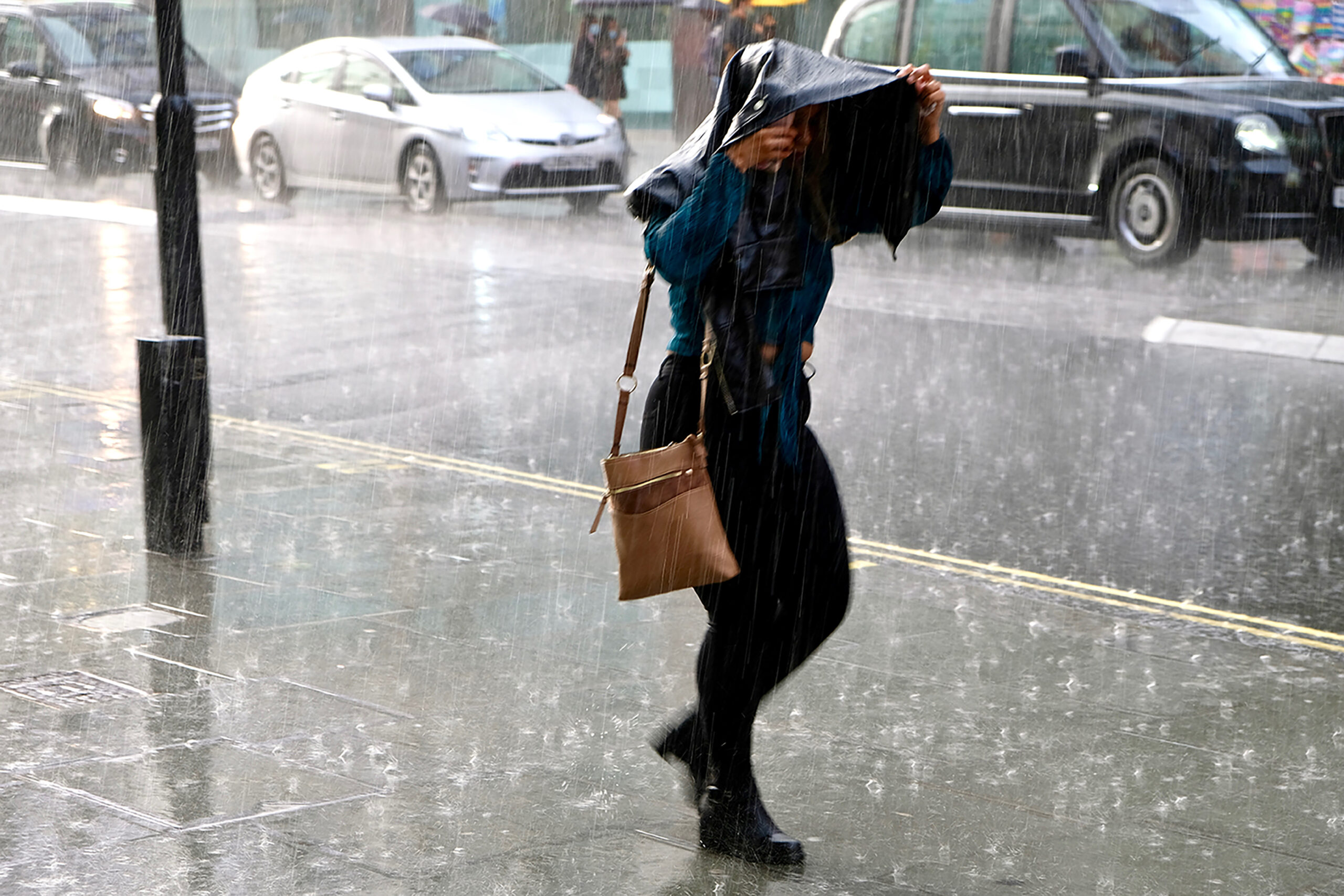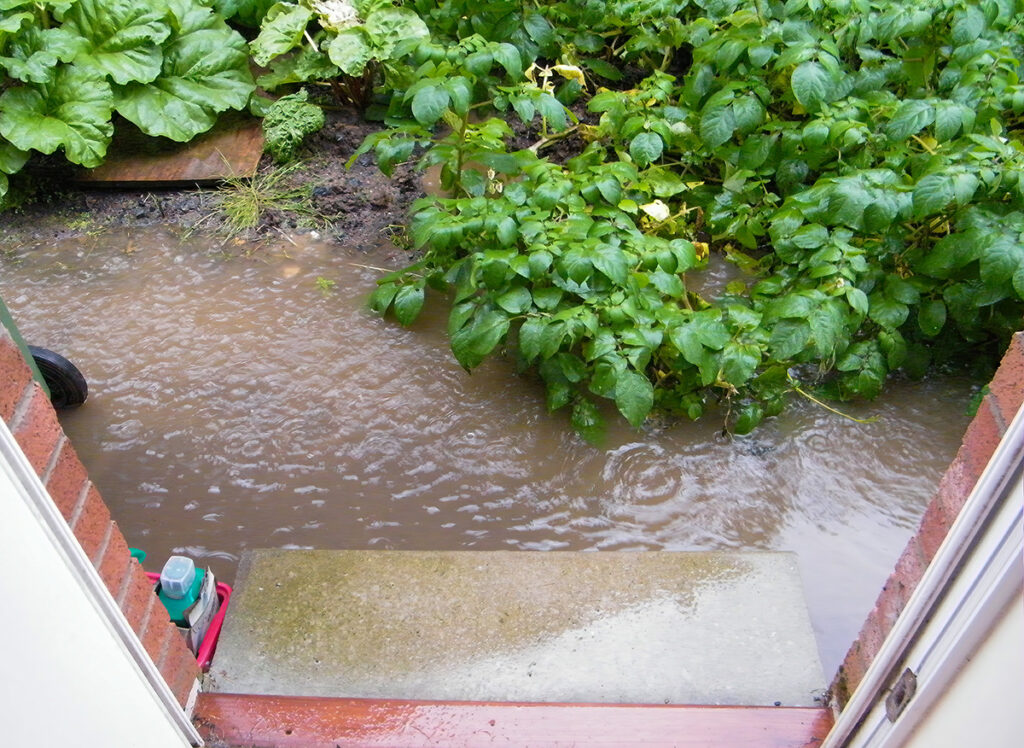December 08, 2025
After the drought – subsidence and surface flooding risks could rise, warn Catalyst experts
The UK’s extremely dry summer could still create elevated risks for property owners well...

Storm Amy – the first storm of the winter – passed over the UK at the beginning of October, leaving in its wake destruction, disruption and a new weather record.
The storm created the deepest area of low pressure ever recorded in Britain in the month of October.
With 34,000 homes without electricity (at one point), flash flooding, roofs blown off, trees toppling across the country, and a man wearing shorts rescued from a Welsh mountain, it was an eventful few days.
Property owners and insurance specialists are now counting the costs as the clean-up continues. For some property owners, recovering from a storm as big as this can take a long time.
Which is why it pays to be prepared for the storms to come. Weather forecasters say they cannot predict how many storms that are severe enough to be named will hit the UK each year.
This is partly because detailed records of these potentially devastating weather events have not been kept for long enough, so there is not enough data to assess future trends.
Catalyst Services UK Managing Director Brad Jackson said: “However, past records do suggest there is likely to be at least one more named storm this winter, and it could be much worse that Storm Amy.
“It is not just above-ground assets that can be devastated. Drainage and water supply pipes are also at risk, which has major implications for the properties they serve.”
For drains and sewers, the risks include:
Flash flooding – Overloading of drains due to excessive rainfall can lead to surface water flooding that swamps gardens and drives
Internal flooding – This can result in internal flooding, with water getting into homes through doors or seeping through foundation substrates
Sewage flooding – Surface water may also get into foul drains where it and can combine with sewage and back up into homes and businesses
This is a particular risk where there are combined sewers, handling both surface water and sewage, which can surcharge during heavy rainfall
Drain blockages – Heavy flows of storm water through drains, combined with surface water flooding, can wash vegetation and silt into underground pipes, causing serious blockages.
Drain damage – In the same way, the force of surcharging water in sewers can damage the pipes, especially if they’re already defective.
This can result in pipe collapses, pipe displacement or cracking that leads to blockages, escape of water, or more water being able infiltrate them.
These risks can be made worse where there are mis-connections, with surface water pipes, for example downpipes, connected to foul drains.
Subsidence risk – Damages pipes can allow water to seep out, washing away soil, further weakening the pipe, or even undermining foundations, causing them to sink.
Off-mains drainage system damage – Rainwater from storms can infiltrate septic tanks, cess pits and sewage treatment plants.
This can overload the tanks, making sewage treatment processes less effective, increasing the risk of sewage backing up into homes, and potentially causing damage. Infiltration of silt can result in pipes becoming blocked and drainage fields being compromised.
Pollution and environmental damage – Overflowing sewers can discharge sewage and other pollutants across open ground and into waterways. This can cause environmental damage that breaches water quality standards.

Being proactive, and understanding the full range of risks that properties may face, is essential to mitigate the effects of extreme weather events like storms. Here are 6 key action points you should consider:
Since 2015, storm names have been assigned each year in an agreement between the UK’s Met Office and their Irish and Dutch counterparts, with storm names using 21 letters of the alphabet.
This aligns the system with the naming of cyclones in other parts of the world. Six letters, Q, U, X, Y and Z, are left out because it is difficult to consistently find easy-to-understand names using them.
Some might say, why name storms? It just gives ‘the weather’ more importance than it deserves. However, the rationale is that it helps communicate storm risks and so reduces potential harm.
For Storm Éowyn in January 2025, according to the Met Office, post-event surveys suggest that 99% of people within the red warning area were aware of the warnings, and 95% of them took action.
The process certainly generates some eye-catching storm names. Every year, there is a public poll for storm names in the three countries. For the 2025-2026 season, 50,000 names were sent in.
Storm Amy got its name because it was the most common female name suggested. Other storms have more unusual names. For example, the next one will be Storm Bram, in honour of Irish author Bram Stoker, of Dracula fame.
Meanwhile, Storm Wubbo, if it occurs in 2025-2026, will be named as a tribute to Wubbo Ockels, the first Dutch person in space. But that will only happen if there are 21 storms in that period, which is unlikely.
While weather experts cannot predict how many storms may occur in any particular year, there is general agreement that climate change is contributing to some weather events becoming more extreme.
Most climate projections indicate that winter windstorms will increase slightly in number and intensity over the UK, though the data is not yet clear enough to state this with a high level of confidence.
If storms do become more severe, with higher winds and more rain, the cost of recovering from them is likely to rise, for both insurance providers and property owners.
Given that clearing up after past storms has already cost an eye-watering amount, this is a serious concern. For example:
Catalyst has been assisting insurance companies as they help their claims customers recover from storms for over a decade.
We deliver a comprehensive range of high-quality belowground and home emergency services to resolve claims on behalf of a growing number of insurance providers, brokers, and loss adjusters.
Those services include: drainage investigations and repairs (mains and off-mains), water supply pipe repairs and replacement, water leak detection, subsidence investigations, and environmental services.
Our claims handlers and technical teams are always ready to respond quickly and decisively in a storm-related emergency, including managing complex recovery projects that may take months to complete.
Contact the Catalyst team today:
Telephone: 0333 004 8008
Email: [email protected]